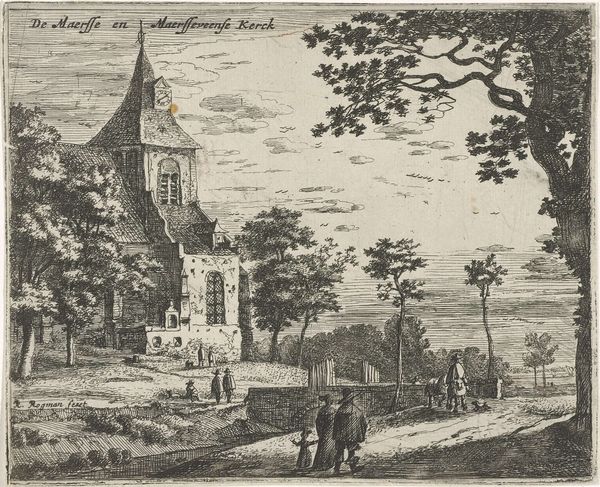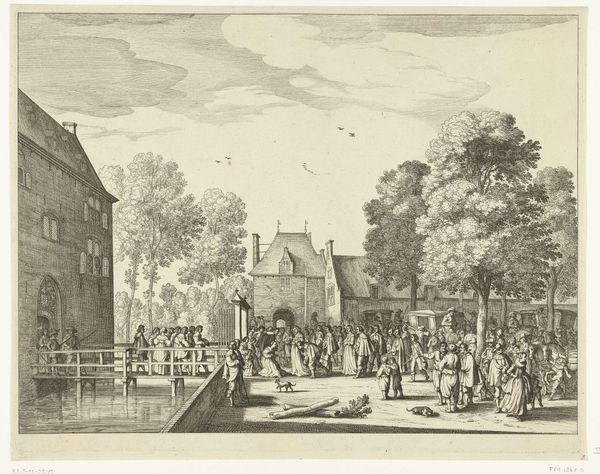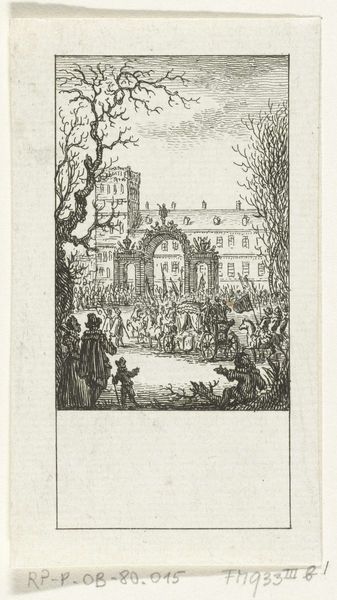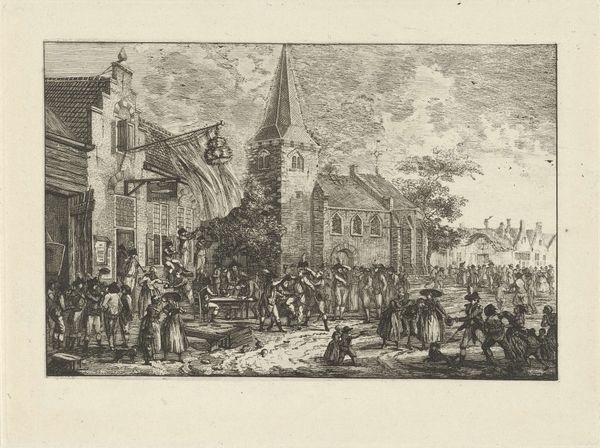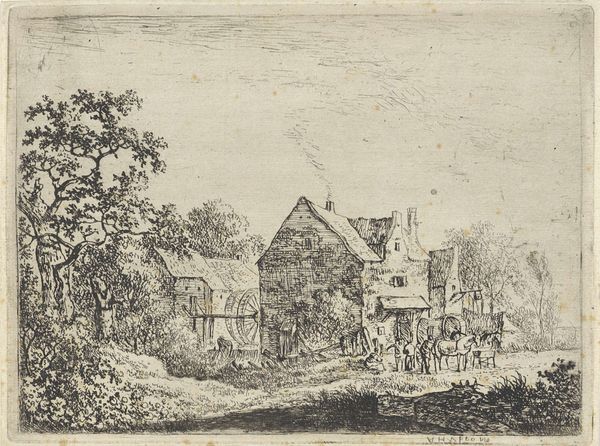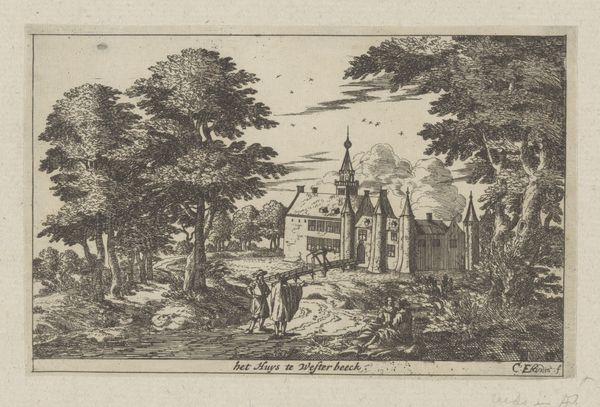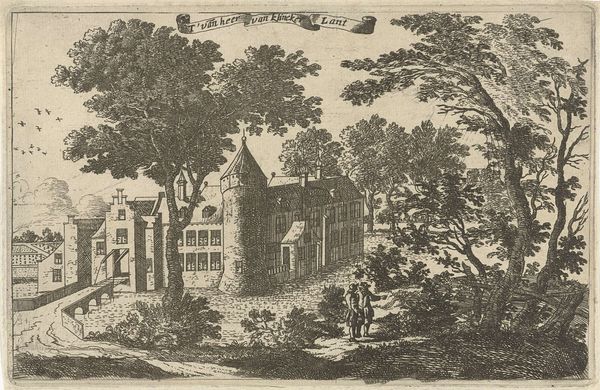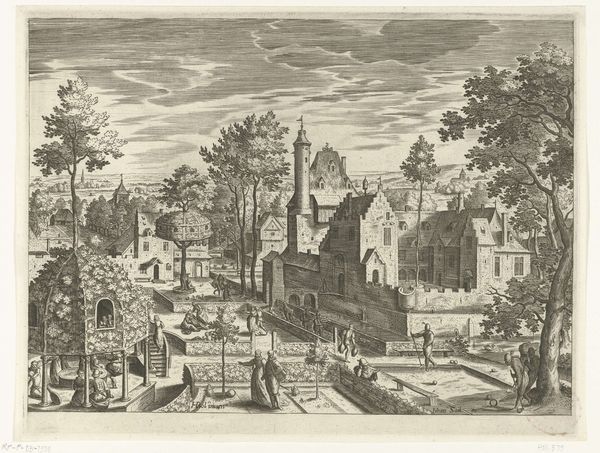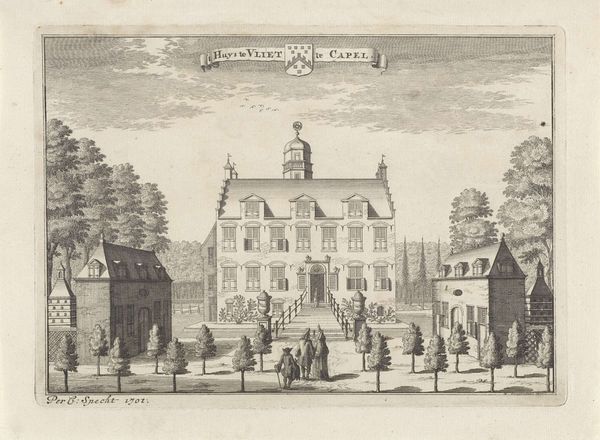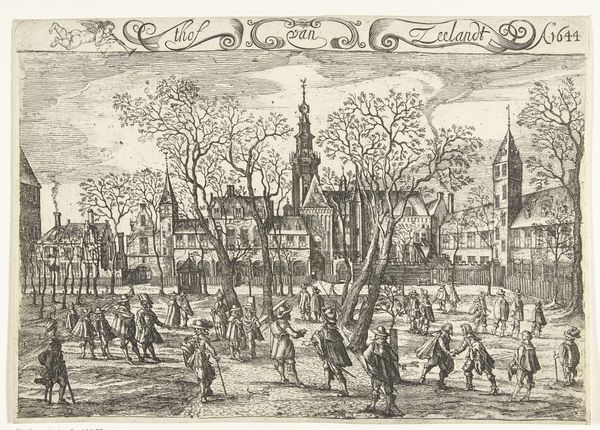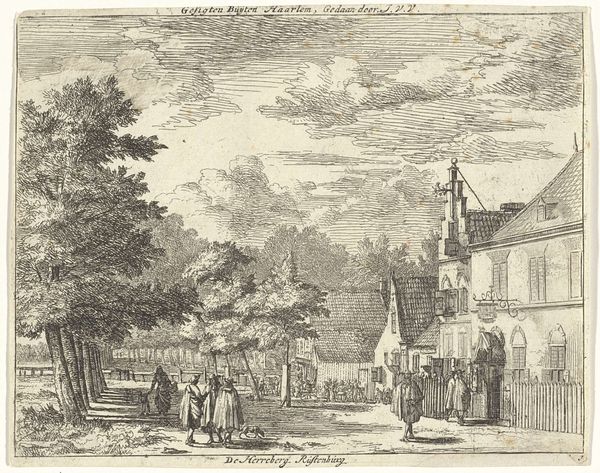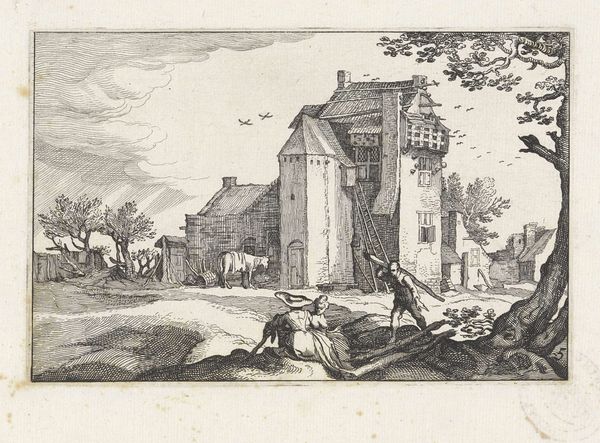
Vreugdevuur bij het bezoek van prinses Maria Henrietta met prins Willem III aan Breda, 1653 1653
0:00
0:00
print, engraving
#
baroque
# print
#
cityscape
#
history-painting
#
engraving
Dimensions: height 138 mm, width 215 mm
Copyright: Rijks Museum: Open Domain
Editor: This engraving by Abraham Dircksz. Santvoort, made in 1653, depicts a bonfire celebrating Princess Maria Henrietta and Prince Willem III's visit to Breda. There's this palpable tension between the celebratory mood and, well, the slightly sinister feeling of a giant fire so close to a building. How do you interpret this work? Curator: The 'sinister feeling' you get isn't just a feeling, it's a recognition of power. Bonfires in the 17th century, like this one commemorating the visit of Maria Henrietta and Willem III, were carefully staged performances. They signified not just celebration but the authority of the ruling class. Think about it - fire, an element both essential and destructive, controlled and displayed as an act of dominance. What does it say about those excluded from this spectacle of power? Editor: That's a perspective I hadn't considered. I was focused on the composition, the figures neatly arranged, the architecture in the background. It felt like a snapshot of a specific moment, almost apolitical. Curator: The seeming order, that very composure, is meticulously crafted to project legitimacy. This event is presented as a unified community welcoming its leaders. But who truly benefitted from this carefully orchestrated display of wealth and authority? Who may have felt differently? Were there dissenters present, and if so, how might their narratives challenge this grand narrative? Editor: So you're saying that beyond the celebration, there might be underlying social dynamics or tensions that Santvoort's engraving both conceals and, in a way, reveals? The engraving becomes less a simple record of an event, and more a deliberate construction of a political image. Curator: Exactly. The art isn't just showing you a historical event; it’s participating in a larger conversation about power, legitimacy, and the control of narrative. How the architecture itself also functions as a backdrop legitimising power is worth exploring more too, right? Editor: It gives me a lot to consider regarding the artist’s own perspectives during that period. This piece has definitely broadened my way of viewing Baroque art! Curator: Mine as well! Thanks.
Comments
No comments
Be the first to comment and join the conversation on the ultimate creative platform.
